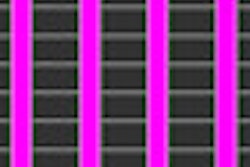Radiologists' recommendations for follow-up exams account for less than 6% of outpatient high-cost imaging exams, according to a new study published in the February issue of Radiology. The study adds further data to the debate over which factors have boosted advanced imaging use -- and, thus, healthcare costs.
Previous research has found that Medicare spending on high-cost imaging modalities such as CT, MRI, and PET grew 17% per year from 2000 to 2006. The passage of reimbursement cuts in the Deficit Reduction Act (DRA) of 2005 reduced this growth rate, but the DRA's impact has been offset somewhat by the use of imaging by nonradiologist physicians, a practice known as self-referral, according to Dr. Susanna Lee, PhD, from Massachusetts General Hospital, and colleagues (Radiology, February 2012, Vol. 262:2, pp. 544-549).
Defenders of self-referral have contended that radiologists engage in a form of the practice themselves when they order recommendations for additional imaging. These recommendations financially benefit radiologists by steering additional studies to them, the argument goes.
The authors wanted to assess the effect of this practice by measuring the proportion of high-cost imaging that is generated by a radiologist's recommendation as a percentage of overall imaging spending.
Lee's team defined "recommended examinations" as those performed within a single episode of care (fewer than 60 days after initial imaging) following a radiologist's recommendation in a prior exam report. The group included chest and abdominal CT, brain and lumbar spine MRI, and body PET exams culled from a database of approximately 200,000 radiology exams between May and December 2007.
For the study, the group also reviewed medical records to verify accuracy of the recommending-recommended examination pairs and to determine the radiologist's reason for the recommendation.
Of 29,232 high-cost imaging exams performed during the study time frame, 1,558 (5.3%) were preceded by a radiologist's recommendation within 60 days. Of the recommendations:
- Chest CT was the most common exam ordered, at 878 (9.4%) of 9,331.
- Abdominal CT was the next most common, at 390 (3.8%) of 10,258.
- Brain MRI was the third most common exam ordered, at 222 (3.4%) of 6,436.
Examination types with the highest number of follow-up studies were chest radiography (431), chest CT (410), abdominal CT (214), and abdominal ultrasonography (120). The most common findings resulting in follow-up are listed below:
- Pulmonary nodules or masses (559 of 1,558, or 35.9%)
- Other pulmonary abnormalities (150 of 1,558, or 9.6%)
- Adenopathy (103 of 1,558, or 6.6%)
- Renal lesions (101 of 1,558, or 6.5%)
- Negative examination findings (101 of 1,558, or 6.5%)
The recommendation rate for additional imaging at Massachusetts General Hospital was previously reported to be an average of 12% during the study period, the team wrote; however, that percentage reflected the rates of radiologists' recommendations, not the actual number of resulting exams.
The current study shows that relatively high recommendation rates account for only 4% to 5.3% of overall high-cost imaging volume. The contrast shows that measuring recommendation rates without assessing how many of them are actually followed can overestimate radiologists' contribution to high-cost imaging volume.
"This discrepancy implies that recommendations for further imaging are often not acted upon by the referring physician," the team wrote. "Given that imaging is one in a multitude of options for patient management, it is not surprising that only a minority of recommendations for further imaging are pursued."
Targeting radiologists' recommendation behavior in an attempt to reduce the rate of advanced imaging use is probably misguided, according to Lee.
"From a health policy perspective, changing radiologists' recommendation patterns isn't going to change the rate of utilization," Lee told AuntMinnie.com. "There are other drivers. It's still important for radiologists to think about why they're making a particular recommendation, and to try to achieve consistency in doing so. But [this effort] is separate from trying to impact volume."




















